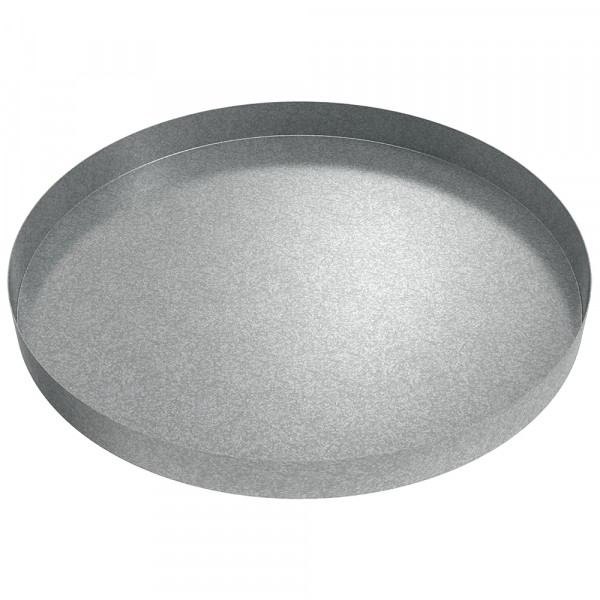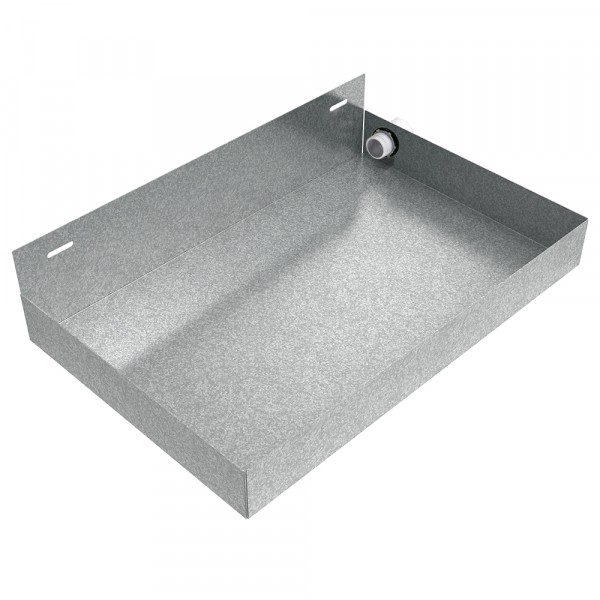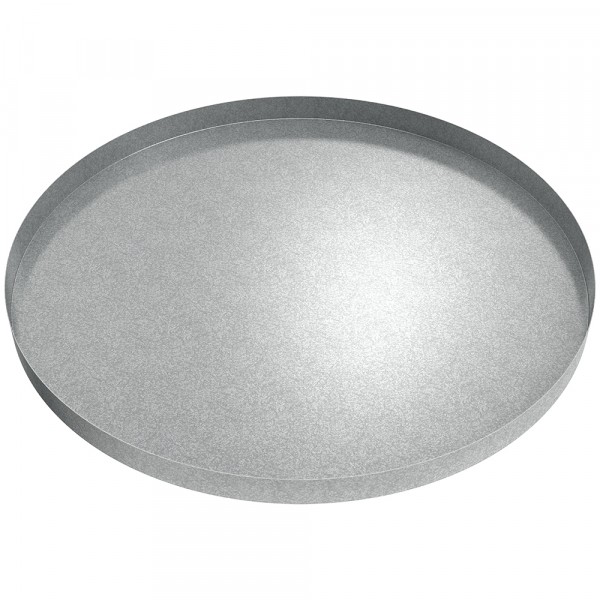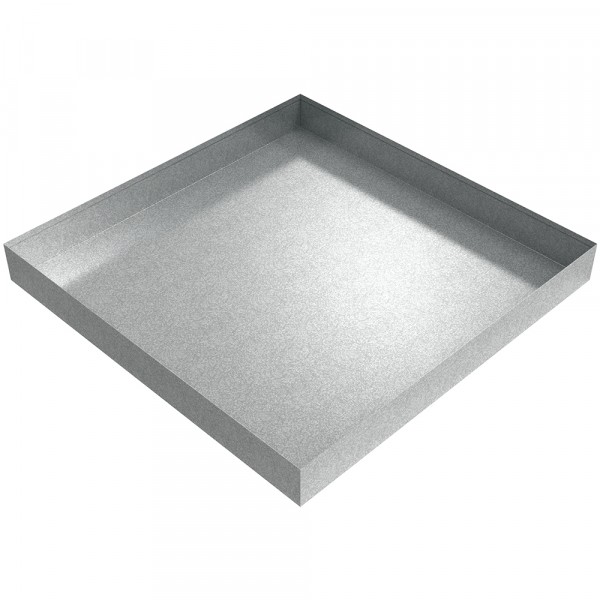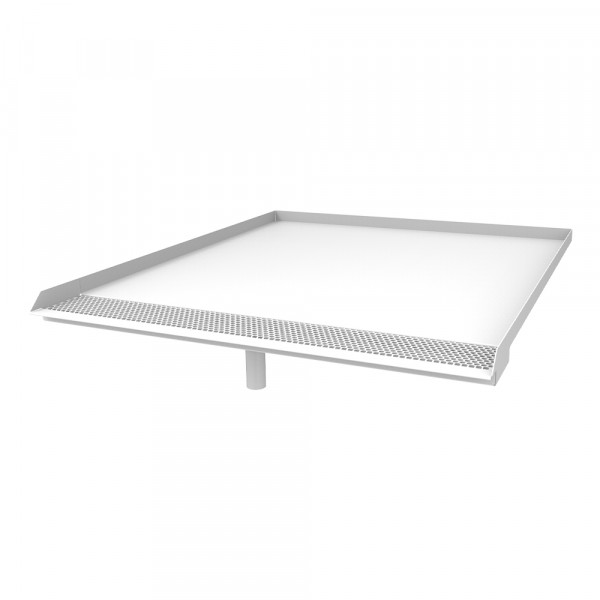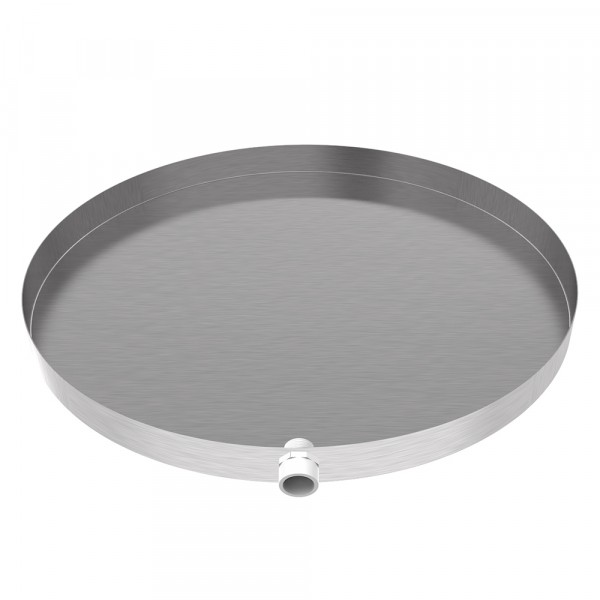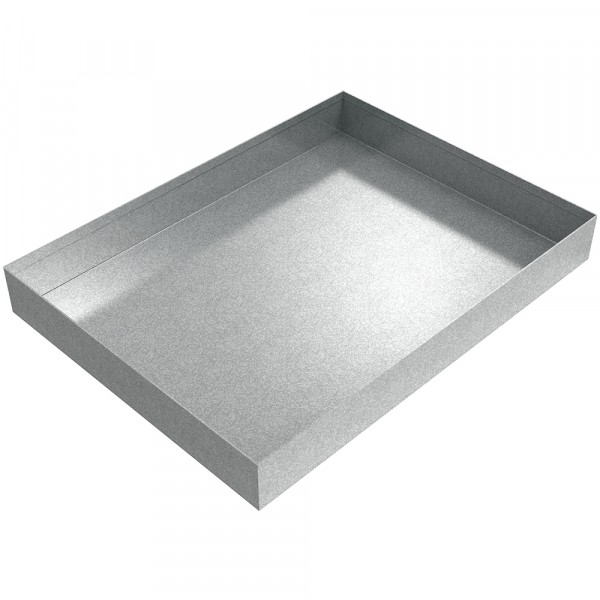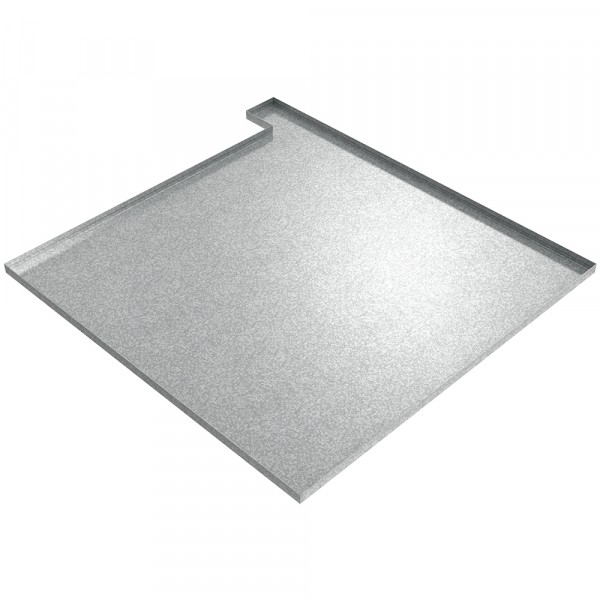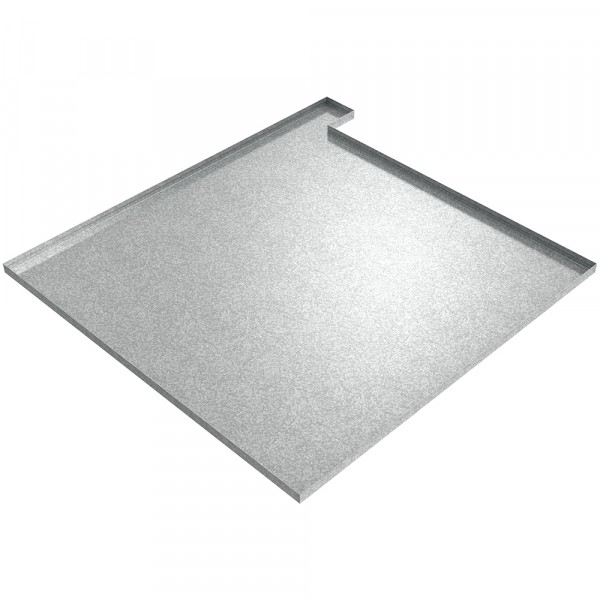Water Heater Pans
Water heater drain pans are made to divert the leaking water to a drainpipe and away from your belongings. No matter what model is found in your home, Killarney Metals offers a wide variety of stock water heater pans and can create custom water heater pans to your specifications.
Special Features
Product selection
Drain Pan - 24" Diameter - Natural Rubber
SKU:KM-06403 Dimensions: 24x2.5x24Water Heater Drip Pan - 24"- Galvanized Steel
SKU:134858 Dimensions: 24x2x24Wall Mounted Tankless Water Heater Drain Pan - 20 x 13 x 2.5 - Galvanized
SKU:KM-04520 Dimensions: 13x2.5x20Round Drip Pan - 36" Diameter - Galvanized Steel
SKU:KM-03897 Dimensions: 36x2x36Water Heater Drip Pan - 36" x 36" x 4" - Galvanized Steel
SKU:129857 Dimensions: 36x4x36Open Front Water Heater Trench Drain Pan - 29" L x 25" W x 1" H - White
SKU:KM-06453 Dimensions: 25x1x29Round Drain Pan - 28" x 2" - Stainless Steel
SKU:KM-05379 Dimensions: 28x2x28Water Heater Drip Pan - 32.75" x 24.5" x 4" - Galvanized Steel
SKU:145215 Dimensions: 24.5x4x32.75Water Heater Drip Pan (Right) - 36" x 36" x 1" - Galvanized Steel
SKU:135970 Dimensions: 36x1x36Water Heater Drip Pan (Left) - 36" x 36" x 1" - Galvanized Steel
SKU:136048 Dimensions: 36x1x36
American-Made Water Heater Drip & Drain Pans
Whether you have a gas or electric water heater, it’s undoubtedly one of the most important pieces of equipment in your home. However, many of us don’t pay any attention to our water heaters until something goes wrong. A leaking water heater can flood a house, destroy flooring, walls, furnishings, and anything else that gets in its way.
Our water heater pans are designed to fit all of the common water heater types, including storage tank water heaters, tankless (on-demand) water heaters, and heat pump (hybrid) water heaters. Use our water heater pan sizing guide if you’re not sure which is right for you.
Do I need a water heater pan?
Water heater drip pans and drain pans are often required by local plumbing codes. Even if they aren’t required in your local area, it’s still a good idea because water damage always costs more than a water heater pan. Worse yet, if water damage causes mold to form, you could be spending thousands on repairs to your home. Water heater pans help to prevent mold damage.
Installing a Water Heater Drain Pan is an investment that pays high dividends whenever it may be needed - don't go cheap when it comes to the protection of your home. Invest in a high-quality, metal water heater drain pan from Killarney Metals today!
Comparing Aluminum & Steel Water Heater Pans
Just like in most aspects of life, there are tradeoffs with choices. In regards to metals in particular and their properties - no pan is the perfect pan, so it is important to discern the traits that are most beneficial to your application. Below are the key attributes to account for when considering water heater drip and drain pan options, and the comparison between aluminum and steel for each of those attributes.
Corrosion Resistance
Aluminum has a high resistance to corrosion due to an innate protective layer of aluminum oxide. Because of this, no further treatment is needed for aluminum to be resistant.
Steel on the other hand contains iron, which will oxidize and turn to rust (iron oxide) when exposed to the environment. Chromium is an alloy that can be added to steel to make stainless steel. Stainless steel is resistant to corrosion because the chromium bonds to the oxygen, which creates a layer of chromium oxide instead of rust. This layer protects the rest of the stainless steel material in the same way the aluminum oxide layer does for aluminum. This also results in a more decorative finish.
The process of galvanizing steel is another way to add corrosion resistance to steel. With this method, steel is immersed in molten zinc to create layers of zinc-iron alloy that have the same corrosion resistant properties as the protective layers in aluminum and stainless steel.
In any case, water heater pans are meant to catch leaks from the water heater, so untreated steel is not a sufficient metal to provide the necessary corrosion resistance. Aluminum, stainless steel, or galvanized steel is your best bet for resisting the elements.
Strength and Malleability
Aluminum is by far more malleable than steel. Aluminum is ductile, meaning it can be stretched out, even into spools of thin wire, without losing its toughness. This pliable nature allows aluminum to be extruded deeper and more intricately without cracking or ripping.
Carbon is another basic ingredient of steel, which is why steel is commonly referred to as carbon steel. The carbon content of steel contributes to its overall strength and durability, putting steel ahead of aluminum in those regards. Steel can be more brittle than aluminum, but it is less likely to warp and more resistant to denting and scratching.
Certain water heater pans can be extruded as a single piece if made out of aluminum, due to how malleable the material is. For this reason, welding isn’t required to create those pans. Steel pans will more often need to be welded together, being much less malleable than aluminum, but more durable overall.
Weight
Aluminum is the lightweight option of the two, making it easier to handle than steel. The weight of steel can vary based on the percentage and types of alloys that make it up. In general, it’s roughly 2.5 times more dense than aluminum. Steel’s weight is attributed to its high concentration of carbon. The more carbon in the steel, the heavier it is. This weight adds to the durability of steel.
If you plan on using a water heater drip pan and emptying it when necessary, aluminum is a great choice. If you aren’t concerned with the mobility of your water heater pan (for instances where there is a drain in the pan), steel might be more valuable with its durability.
Cost
Steel is usually less expensive than aluminum, pound for pound. Even the extra processes of adding protective layers to steel for corrosion resistance will still generally result in lower costs than aluminum. The raw material price of aluminum is the reason for its higher cost.
There are, however, other factors that affect the overall cost of aluminum and steel parts. For instance, custom extrusion with aluminum can be less costly than welding together many intricately cut pieces of steel to make the same part. The lower weight of aluminum also means a lower shipping cost.



